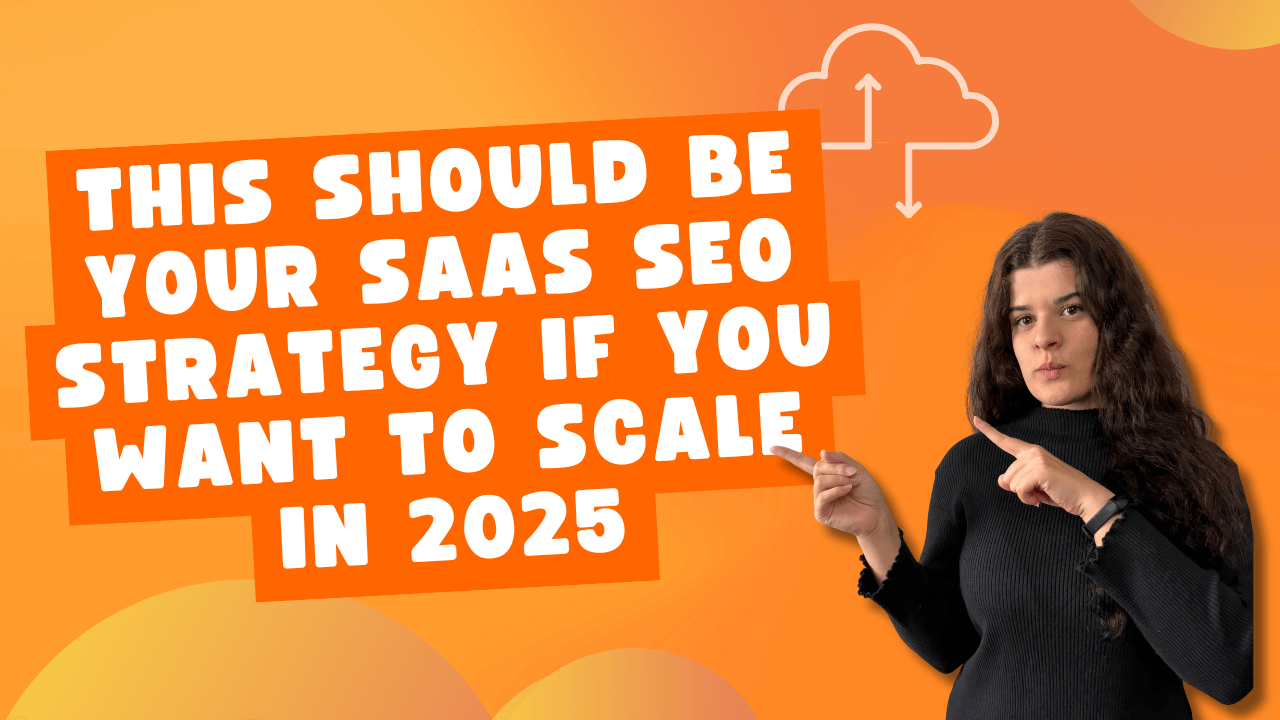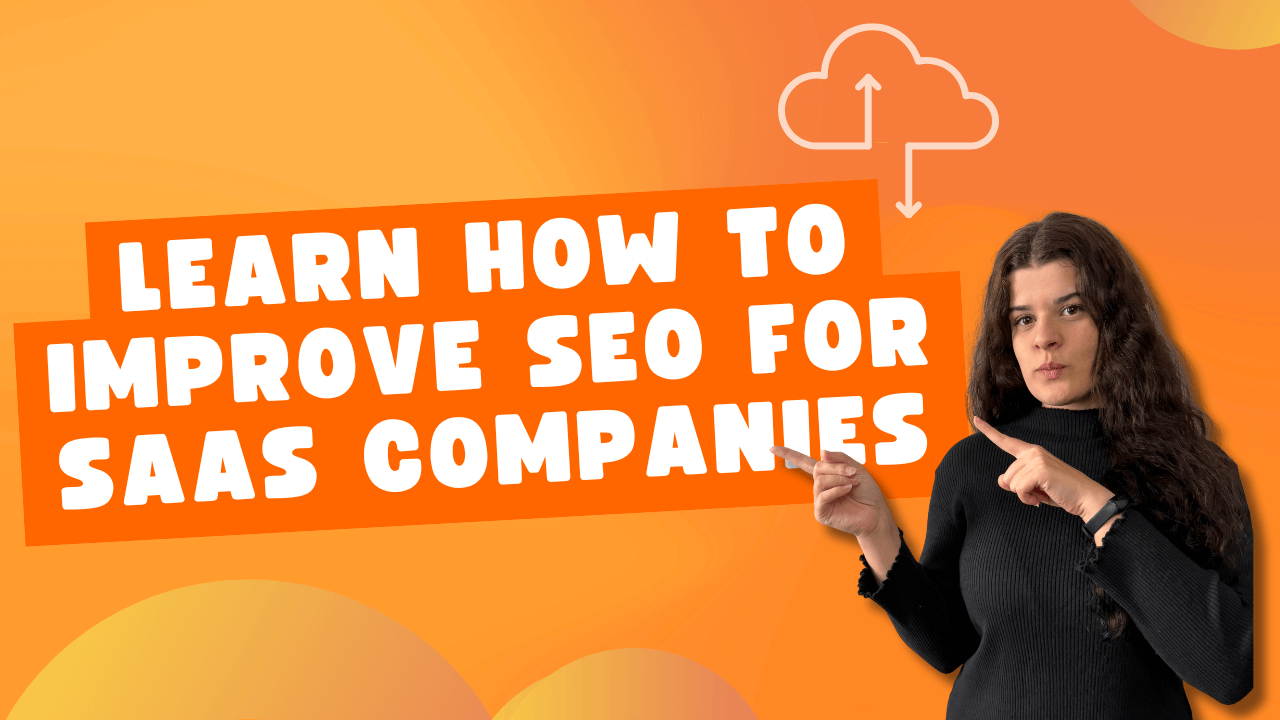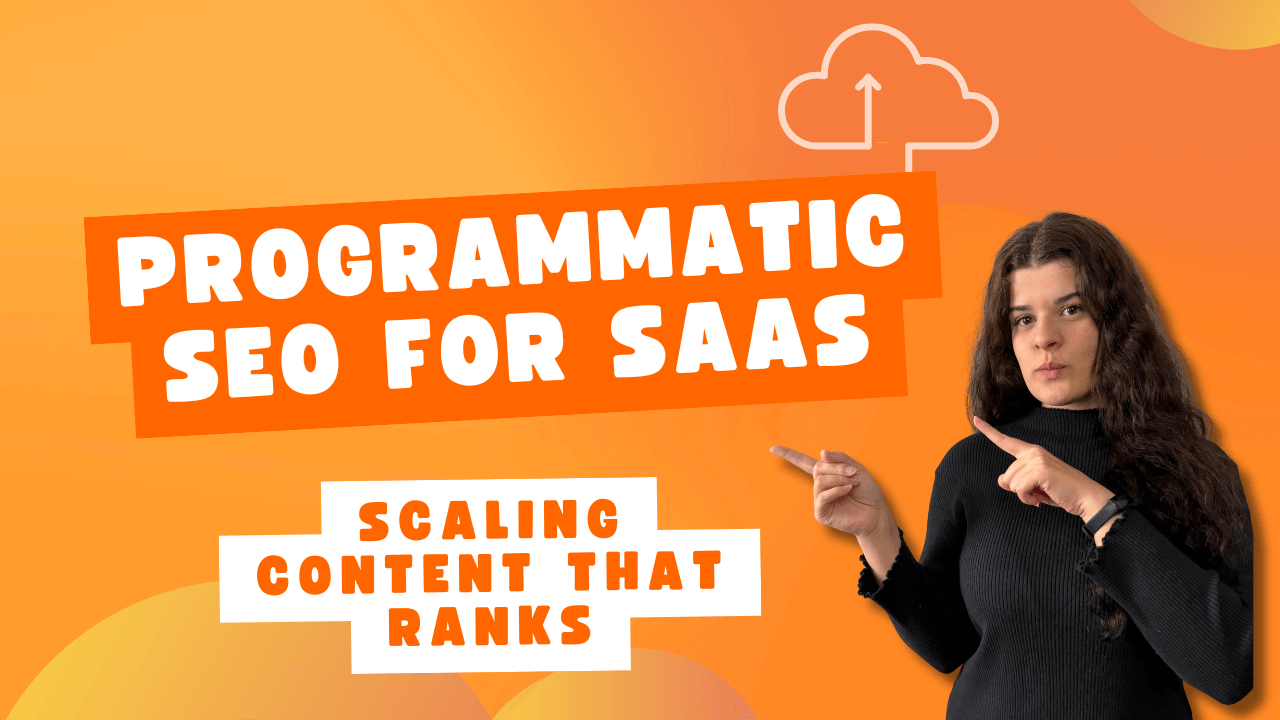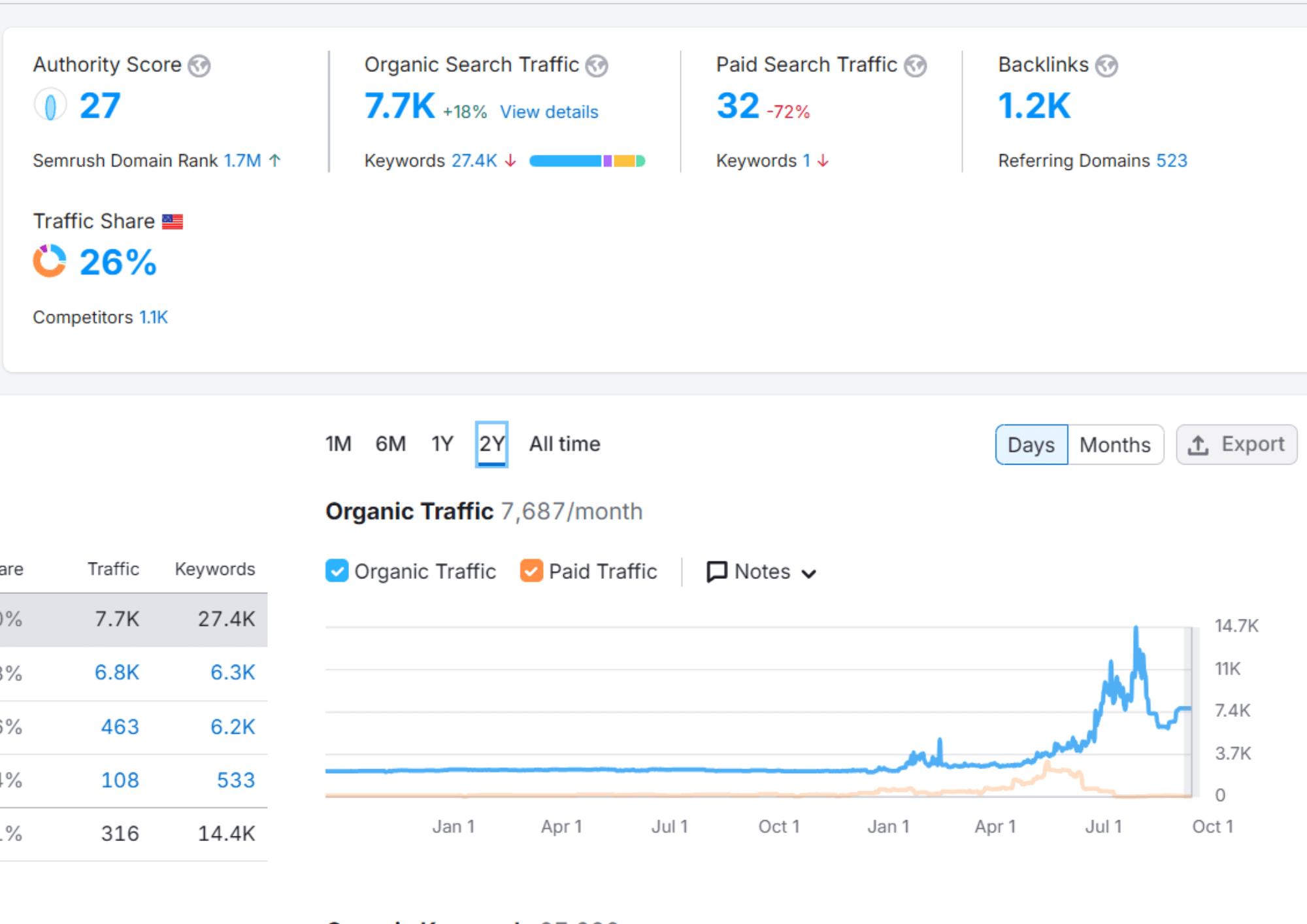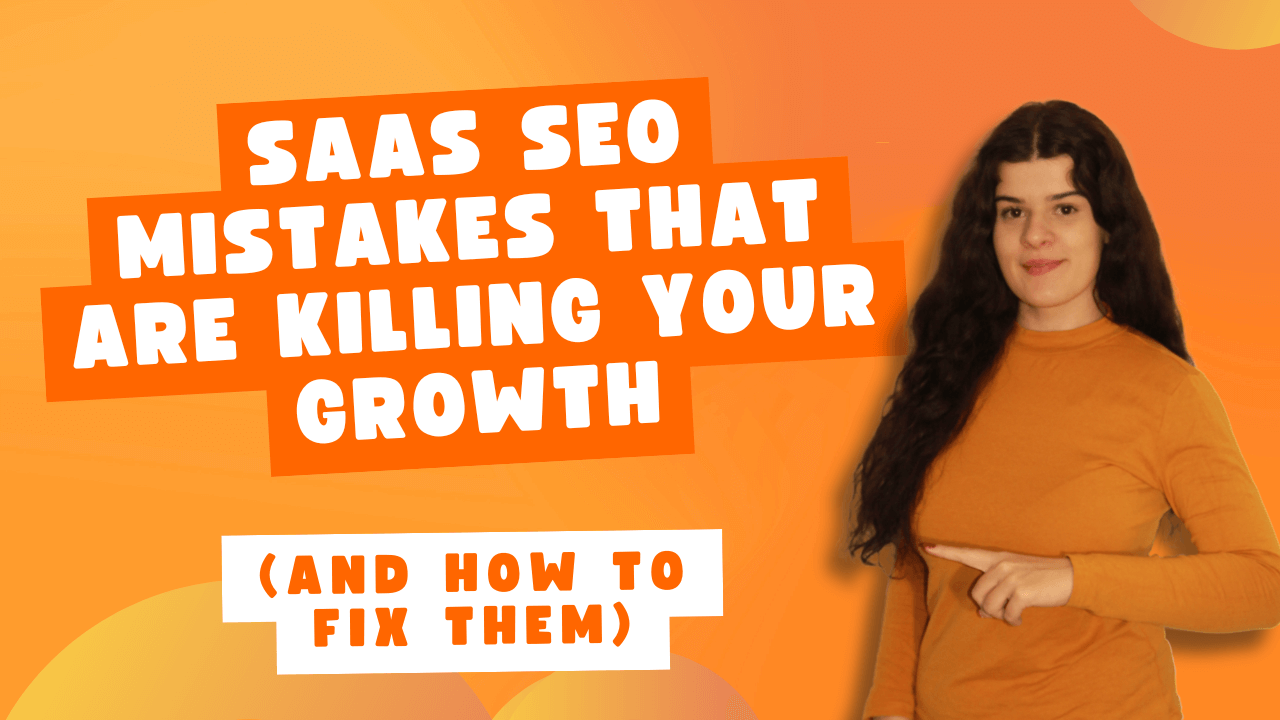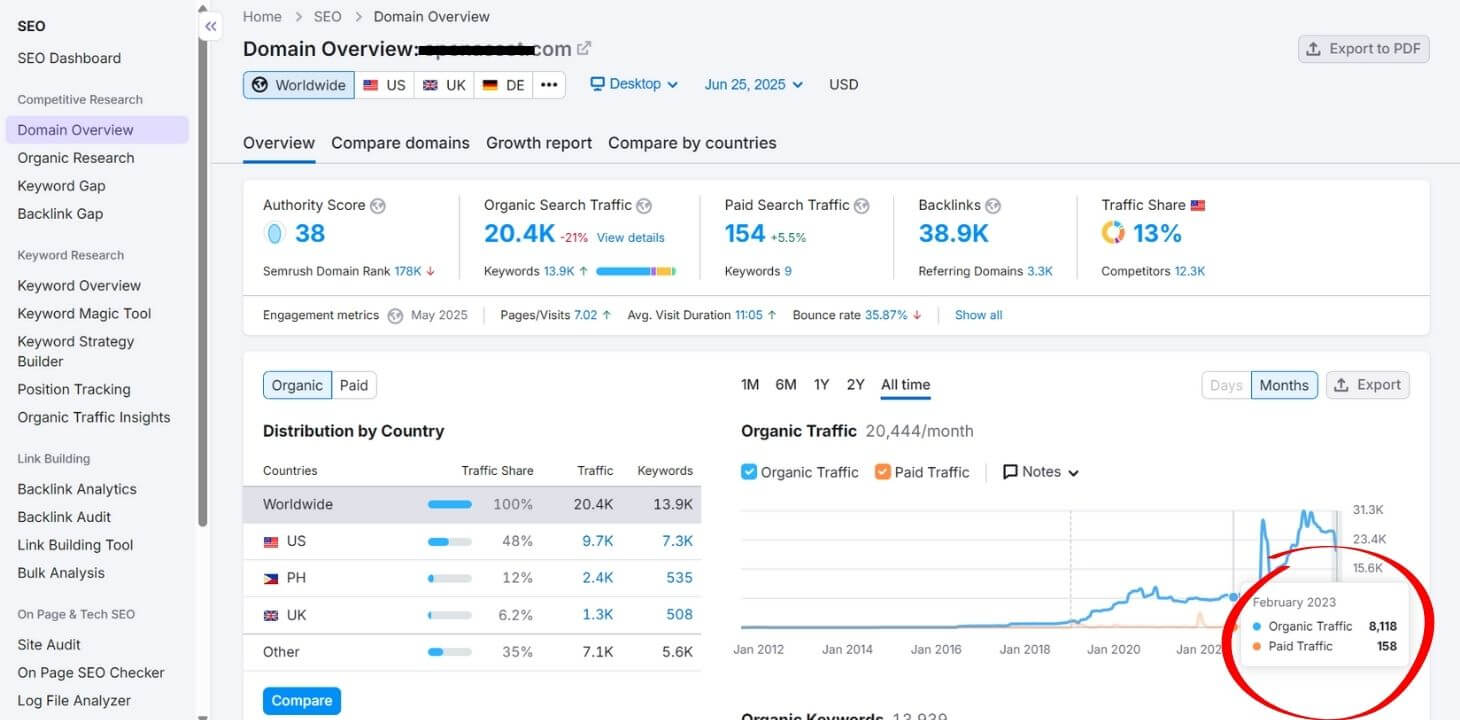You’ve built an incredible SaaS product, your users love it, but your website sits on page 47 of Google search results like a hidden gem nobody will ever find. While your competitors are capturing thousands of qualified leads through organic search, you’re watching your customer acquisition costs skyrocket through paid advertising.
The truth is, a well-executed SaaS SEO strategy is about building a sustainable growth engine that compounds over time. So, let me give you our SaaS SEO strategy that will help you scale your business on Google.
Table of Contents
Why Your SaaS SEO Strategy Needs to Be Different
Before I show you the strategy, let’s address the elephant in the room. SaaS SEO isn’t just regular SEO with a software twist as it is a fundamentally different project that requires a unique approach.
Traditional businesses sell products once. You sell ongoing relationships. Traditional businesses target broad audiences. You target decision-makers with complex, lengthy buying processes. This fundamental difference shapes every aspect of your SaaS SEO strategy.
“The biggest mistake I see SaaS companies make is treating SEO like a blog publishing exercise. They create content about industry trends instead of solving the specific problems their product addresses. That has nothing to do with SEO, that’s just content marketing.”
— Mary Chen, VP of Growth at our partnering agency
The SaaS Customer Journey
Your potential customers don’t wake up one morning and decide to buy your software. They go through a journey that looks something like this:
SaaS Customer Journey Framework
Understanding search behavior across the buying process
| Stage | What They’re Thinking | Search Behavior | Content Opportunity |
|---|---|---|---|
| Problem Recognition | “This manual process is killing us” | How to solve [specific problem] | Educational guides, best practices |
| Solution Research | “What tools exist for this?” | Best [category] software, [problem] tools | Category overviews, feature comparisons |
| Vendor Evaluation | “Which one fits our needs?” | [Your brand] vs [competitor], reviews | Comparison pages, case studies |
| Implementation Planning | “How do we make this work?” | How to implement [software type] | Implementation guides, best practices |
Each stage requires different content, different keywords, and different conversion strategies. Most companies focus heavily on the middle stages while ignoring the crucial problem recognition and implementation phases.
The Foundation: Technical SaaS SEO Strategy
Before we can build a content empire, we need solid technical foundations. SaaS websites have unique technical challenges that can make or break your organic visibility.
The JavaScript Dilemma
Most modern SaaS applications are built with JavaScript frameworks like React or Vue.js. While these create beautiful user experiences, they can be SEO nightmares if not handled properly.

The solution would be to implement server-side rendering (SSR) or static site generation (SSG) for your marketing pages while keeping your app dynamic. Companies like Notion and Figma do this brilliantly—their marketing sites are lightning-fast and SEO-friendly, while their applications remain interactive.
Site Architecture That Scales
Your SaaS SEO strategy needs a site structure that can grow from dozens to thousands of pages without losing authority. Here’s the architecture that works:
Why This Architecture Works
This structure is strategically designed for SEO success. Each section serves specific search intents and buyer journey stages, while maintaining clear topical authority.
Key Benefits:
- Clear keyword targeting at each level
- Supports internal linking strategies
- Scales from startup to enterprise
- Search engines easily understand site purpose
Notice how each section serves a specific search intent and buyer journey stage. This is a strategic SEO architecture that helps search engines understand your site’s expertise and authority.
For a deep dive into technical implementation, check out our guide on technical SEO for SaaS.
Keyword Strategy
Most SaaS companies make the same keyword mistake: they target the obvious terms and wonder why they can’t compete with established players. A winning SaaS SEO strategy goes deeper.
The Three-Tier Keyword Framework
Instead of chasing high-competition terms, smart SaaS companies build keyword portfolios across three tiers:
| Tier | Competition | Volume | Intent | Example |
|---|---|---|---|---|
| Tier 1: Problem-First | Low-Medium |
High
|
Educational |
“how to track project deadlines”
|
| Tier 2: Solution-Aware | Medium-High |
Medium
|
Commercial |
“best project management software”
|
| Tier 3: Competitor | Low-Medium |
Low-Medium
|
Comparison |
“asana vs monday alternatives”
|
The magic happens when you connect these tiers through internal linking and content funnels. Someone searching for “how to track project deadlines” isn’t ready to buy, but they might be in six months when they remember that helpful guide from your site.
The Long-Tail Goldmine
While everyone fights over “CRM software,” smart companies are capturing terms like:
- “CRM software for real estate teams under 50 agents”
- “how to migrate from Salesforce to HubSpot”
- “CRM integration with QuickBooks online setup”
These terms have lower competition, higher conversion rates, and attract users with specific, urgent needs.
“We stopped chasing the obvious keywords and started targeting the specific problems our ideal customers searched for. Our organic conversion rate went from 2.3% to 8.1% in six months, even with lower overall traffic.”
— Marcus R., Head of Marketing at our partnering company
Content That Converts
Content is where your SaaS SEO strategy comes alive, but not just any content. SaaS companies need content that educates, builds trust, and drives conversions across a long sales cycle.
The Product-Led Content Approach
The most successful SaaS content shows how to solve them using your product. This approach works because it:
- Demonstrates value before asking for a signup
- Builds product familiarity and reduces onboarding friction
- Creates content that only you can write (competitive moat)
- Naturally incorporates product keywords and features
Instead of writing
“10 Tips for Better Project Management,”
write “How to Set Up Automated Project Workflows in [Your Tool] (With Templates).”
The second approach provides more value and naturally leads to product trials.
The Authority Building Framework
Search engines love expertise, and SaaS companies are perfectly positioned to demonstrate it.
Here’s how to build topical authority systematically:
Content Cluster Strategy:
Hub Page: “Complete Guide to Sales Pipeline Management”
├── Supporting Article: “How to Define Sales Stages That Actually Work”
├── Supporting Article: “Sales Velocity: The Metric Most Teams Calculate Wrong”
├── Supporting Article: “Pipeline Forecasting: Templates and Best Practices”
├── Tool/Template: “Free Sales Pipeline Calculator”
├── Case Study: “How TechCorp Increased Close Rate 34% in 90 Days”
└── Comparison: “Pipeline Management: CRM vs Dedicated Tools”
Each supporting piece links back to the hub page and to each other, creating a web of relevance that search engines can’t ignore. More importantly, visitors can easily find related information, increasing time on site and conversion opportunities.
Technical Implementation: Making It Work
Theory is nice, but implementation is where most SaaS SEO strategies fall apart. But how to make this work?
Schema Markup for SaaS
SaaS companies have unique opportunities with structured data.
Here’s a schema markup example:

This markup helps your product appear in rich results and software comparison snippets, giving you more SERP real estate than basic text listings.
Internal Linking Strategy
Your internal linking should mirror your customer journey. Here’s a strategic approach:
| From Page Type | To Page Type | Link Context | Purpose |
|---|---|---|---|
| Problem-focused blog post | Solution feature page | “Here’s how [Feature] solves this” | Move users down funnel |
| Feature page | Case study | “See how [Customer] uses this” | Provide social proof |
| Comparison page | Free trial signup | “Try it free for 14 days” | Convert comparison shoppers |
| Help documentation | Advanced features | “Upgrade for advanced options” | Drive account expansion |
Measuring Success: SaaS SEO Strategy KPIs
Traditional SEO focuses on rankings and traffic. SaaS SEO needs to connect directly to revenue. Here are the metrics that matter:
The SaaS SEO Dashboard
| Metric | Why It Matters | Good Benchmark | Tool to Track |
|---|---|---|---|
| Organic Trial Signups | Direct conversion impact | 15-25% of total trials | Google Analytics + CRM |
| Content Assist Rate | Content’s role in conversions | 60%+ of organic conversions | Attribution tracking |
| Organic Customer LTV | Channel profitability | 20%+ higher than paid | CRM + Revenue tracking |
| Feature Page Rankings | Bottom-funnel visibility | Top 5 for primary terms | Rank tracking tools |
The key is connecting SEO efforts to revenue, not just vanity metrics. A 500% increase in blog traffic means nothing if it doesn’t drive qualified signups.
Advanced SaaS SEO Strategy Tactics
Once you’ve mastered the fundamentals, these advanced tactics can give you a significant competitive edge:
Programmatic SEO for Scale
SaaS companies have a unique advantage: they can create thousands of useful, unique pages based on their data and functionality.
I’m talking about:
- Template galleries (“Project Timeline Template for Marketing Campaigns”)
- Integration pages (“How to Connect Slack with [Your Tool]”)
- Use case pages (“CRM Setup for Real Estate Agencies”)
- Comparison matrices (auto-generated competitor comparisons)
The key is ensuring each page provides real value, not just thin content for SEO purposes.
Customer-Generated SEO Content
Your customers are creating valuable content every day; case studies, implementation guides, troubleshooting solutions. Smart SaaS companies systematically capture and optimize this content:
“We realized our customer success team was having the same conversations repeatedly. We started documenting these as public help articles, optimized them for search, and now they drive 30% of our organic traffic while reducing support tickets.”
— Lisa Park, Director of Customer Success at our partnering firm
Common SaaS SEO Strategy Mistakes to Avoid
After working with dozens of SaaS companies, here are the mistakes that consistently derail otherwise solid SaaS SEO strategies:
The “Build It and They Will Come” Fallacy
Publishing great content isn’t enough. You need promotion strategies:
- Share new content with existing customers (they’re your best promoters)
- Engage in relevant community discussions with helpful answers
- Collaborate with industry influencers and thought leaders
- Repurpose content across multiple channels and formats
Ignoring the Full Customer Lifecycle
Most SaaS companies optimize for acquisition but ignore retention and expansion.
Smart companies create SEO content for:
- Onboarding success (“Getting Started with [Feature]”)
- Advanced use cases (“Advanced [Tool] Techniques for Power Users”)
- Integration guides (“Connecting [Your Tool] with Your Tech Stack”)
- Expansion opportunities (“When to Upgrade Your [Tool] Plan”)
Your 90-Day SaaS SEO Strategy Launch
If you’re ready to implement everything we’ve covered, here’s your step-by-step 90-day launch plan:
Days 1-30: Foundation
- Audit your current technical SEO (use our SaaS SEO audit guide)
- Implement server-side rendering for marketing pages
- Set up proper site architecture and URL structure
- Research and map your three-tier keyword strategy
- Set up conversion tracking for organic traffic
Days 31-60: Content Creation
- Create your first content cluster around your primary keyword
- Develop 3-5 product-led content pieces
- Build comparison pages for your top 3 competitors
- Optimize existing product and feature pages
- Implement schema markup across key pages
Days 61-90: Optimization and Scale
- Launch your programmatic SEO pages
- Begin content promotion and link building
- Set up automated reporting for SaaS SEO KPIs
- Plan your next content cluster based on early results
- Start collecting customer stories for case studies
Your Next Steps
Building a successful SaaS SEO strategy is about choosing the right combination for your specific situation and executing consistently over time.
Start with the technical foundations, build your keyword strategy around real customer problems, create content that demonstrates value, and measure what matters to your business. Most importantly, remember that SEO is a long-term investment that compounds over time.
The SaaS companies winning with organic search aren’t necessarily the ones with the biggest budgets, rather the ones with the clearest strategy and the most consistent execution.
If you want to learn more about SEO for SaaS, I would advice to check out our comprehensive guide to SEO for SaaS for additional strategies and tactics. Or SEOCurly can help you out with your SEO strategy. Send us an email with the keyword “FREE SEO FOR SAAS”, and we’ll send you free audit of your current website alongside with that it would be best to work on next.

